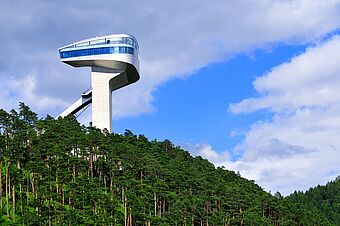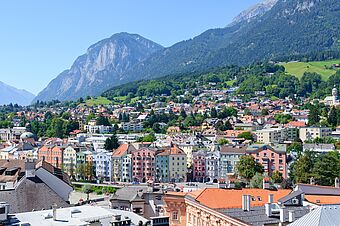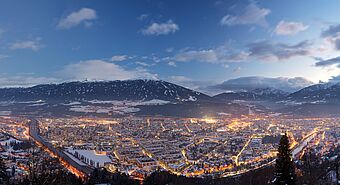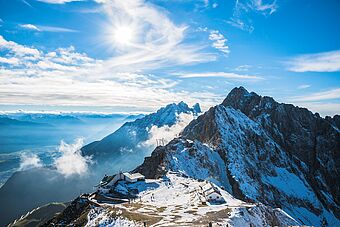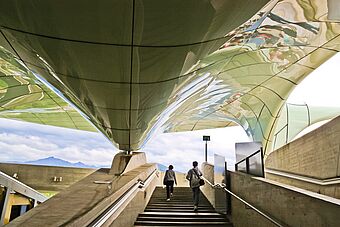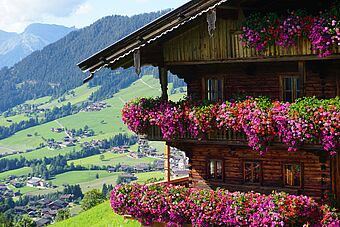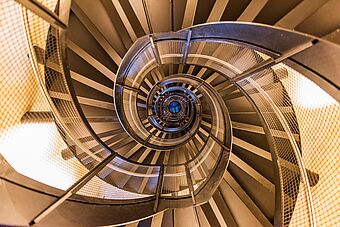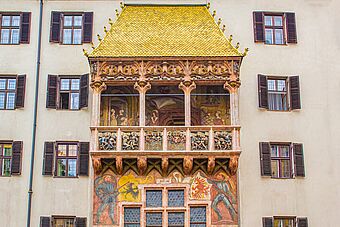We love Tyrol
From the Golden Roof, a landmark in the heart of Innsbruck‘s Old Town, to the Imperial Palace and the impressive Nordkette rising to 2,000 meters above sea level, you‘ve not truly embraced the Innsbruck region until you‘ve seen and experienced these sights and attractions.
When it comes to culture and nature, highs and lows, traditions and trends, no other region combines such opposites in such as charming manner as Innsbruck. In just 20 minutes, you can float from the heart of the Tyrolean capital to the lofty heights of the Nordkette, to experience this Alpine jewel up close and view the hustle and bustle from above. Or you can take a trip through time from modern architecture to historical buildings and discover Alpine- urban style. The special flair of the old town and its famous sights is just a breath away from the next hike or cycling tour, the next ski region or winter hiking experience.
The Nordkette
The highest city stroll in the Alps – the ride to the top of Innsbruck‘s ‚own‘ mountain soars high above the River Inn, spruce forests and jagged rocks to the home of the ibex. The futuristic-looking Hungerburg funicular, designed by architecture superstar Zaha Hadid, transports visitors from the centre of Innsbruck up to a plateau above the city. Guests then take the Seegrube cable car to Seegrube station and then the Nordkette cable car up to Hafelekar – the window to the Karwendel mountains.
On days when a thick blanket of cloud obscures the view to the Hafelekar, guests wait for that magical moment when the gondola breaks through the wall of cloud and soars into the blue sky. The Nordkette thrives on breathtaking contrasts – one reason why the region enjoys cult status, even among locals. Warm Indian summers, the first snow, Innsbruck‘s busy streets and the summit cross, the hustle and bustle of the city and the complete silence are all just a short cable car ride away from each other.
The City Tower
The City Tower was completed in 1450 on the site of the old town hall. It might not seem huge compared to modern buildings, but in 1450, 51 metres was very impressive and a proud symbol of the self-confidence of the people of Innsbruck. Its onion dome was added a hundred years after its completion. It rises majestically skywards amongst the medieval buildings of the old town, providing an excellent vantage point for finding one‘s bearings and enjoying a romantic view of Innsbruck.
Guards kept watch from the city tower for almost 450 years, warning citizens about fire and other dangers. The lower storeys also served as a prison. Over 133 steps lead visitors up to the 31-metre-high viewing platform. This overlooks the medieval streets, and also provides a view of the Bergisel hill, Patscherkofel mountain, the River Inn and the Nordkette.
The Golden Roof
Innsbruck‘s most famous landmark is almost 50 years younger than the City Tower but it still shines today in the heart of the historic old town. The alcove balcony gets its name from the 2,657 fire-gilded copper tiles. The building has reigned over medieval houses and shady arcades for over 500 years. It was built by Emperor Maximilian, who enjoyed the view: he would gaze out at the smorgasbord of activity in his city, watch jousting tournaments and let people pay homage to him. The front depicts the Emperor and his two wives. As rumour has it, the Emperor liked his first wife better and so only Maria of Burgundy looks out from the relief, while his second wife, next to him on the image, keeps her gaze lowered.
Court Church
Moving on from the Golden Roof to the Court Church. The Court Church is called the „Schwarzmander Church“ („black men church“) by locals thanks to the 28 life-size bronze figures that stand guard, not just over the church but also the tomb of Emperor Maximilian I within. Interestingly, eight of the „black men“ are actually women and the emperor‘s tomb is empty. Maximilian is actually buried in Wiener Neustadt. However, the church walls and foundations there were not strong enough to bear the weight of his carefully crafted tomb. He had meticulously planned its construction prior to his death, but it was not completed until three decades later.
The Silver Chapel is a must-see for all visitors to the Court Church. Two other famous people from Innsbruck are buried here: Archduke Ferdinand II and his wife Philippine Welser. During her lifetime, she was a local celebrity: the „Queen of Hearts“, a herbal expert, and a bathing beauty, who was even accused of witchcraft by detractors. A magnificent silver altar with Madonna by court architect Giovanni Lucchese dominates the room alongside another special feature: an organ with pipes made exclusively of wood.
The Triumphal Arch
A Roman-inspired triumphal arch surrounded by modern city life and impressive, timeless mountains: The Triumphal Arch is one of Innsbruck‘s most striking sights. Like a triumphal arch of antiquity, it bears witness to Innsbruck‘s history. And yet it is not that old. The baroque structure was built by order of Maria Theresa in the 18th century.
At that time, the Empress was planning the wedding of her son Archduke Leopold in Innsbruck. Numerous changes to the cityscape can be traced back to this imperial „wedding planner“. For example, the medieval city gate at the entrance to Innsbruck‘s old town was demolished, with the stone being used to build the Triumphal Arch. However, it was richly decorated with skilful marble reliefs and inscriptions. It stands at the end of Maria- Theresien-Strasse and marks the edge of the city centre.
Bergisel ski jump
The ski jump sits majestically above the Olympic city of Innsbruck on the historic Bergisel hill, which has always been of great importance for Tyrol and especially for Innsbruck. Around 200 years ago, brave Tyroleans, led by Andreas Hofer, fought on this hill for their country‘s freedom. The first ski jump was built on this historic ground in 1925.
The sports site has hosted the Olympic games twice: the Olympic flame burned on the Bergisel at the Olympic games in 1964 and 1976. Other spectacular, major events have taken place at the stadium, such as the mass celebrated by Pope John Paul II in 1988 for 60,000 believers.
Historical treasures and modern architecture, untamed nature and urban hustle and bustle. Sightseeing in Innsbruck is all about contrasts, especially between the city and mountains. Innsbruck animates, endows and inspires the soul of every single one of its visitors.
EDITOR‘S TIPS
Ambras Castle Innsbruck
Schlossstraße 20, 6020 Innsbruck
Swarovski Crystal Worlds
Kristallweltenstraße 1, 6112 Wattens
Helbling House
Herzog-Friedrich-Straße 10,
6020 Innsbruck
Nordkette Cable Car
Rennweg 3, 6020 Innsbruck
Alpenzoo Innsbruck
Weiherburggasse 27, 6020 Innsbruck

